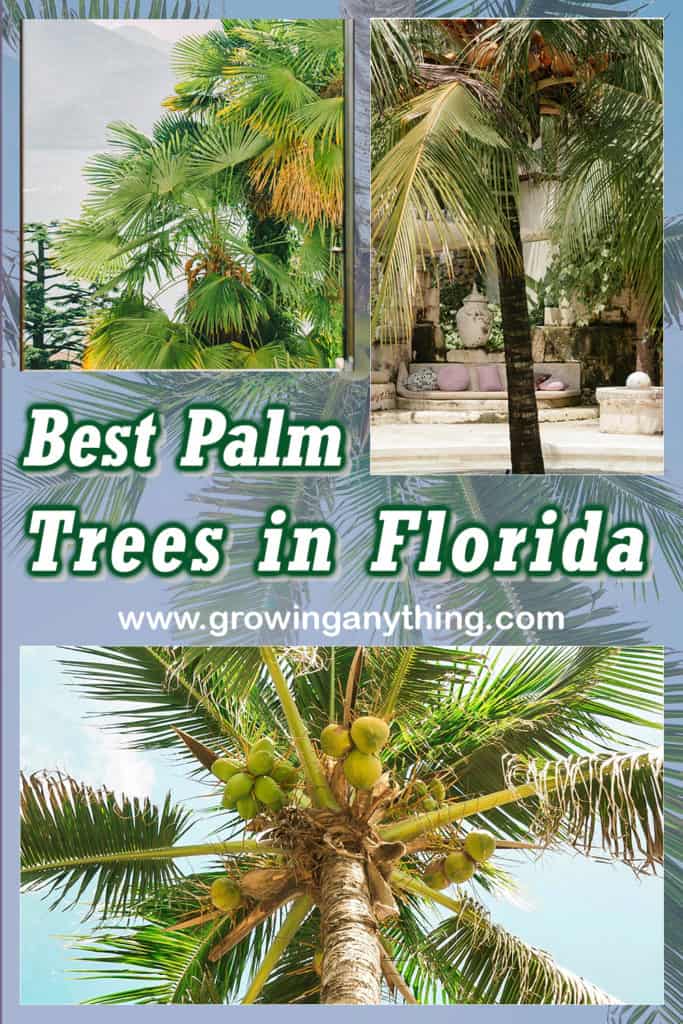25 Best Palm Trees in Florida
Are you looking for the best palm trees in Florida? Here is an article for you! There are so many beautiful, unique and charming palm types to see and grow in Florida.
In fact, Florida is known as palm heaven because its warm climate with enough rainfalls allows different palm trees to grow to their full potential. Interestingly, there are only 12 palm trees that are native in Florida, but many more are grown and nurtured in this state.
The Florida skyline is known for its beautiful, tall, and magnificent palm trees. They grow throughout the state, mostly along roads and near beaches. But, you can find some extraordinary palms in Florida parks!
Here are the 25 palms to pay attention to in Florida!
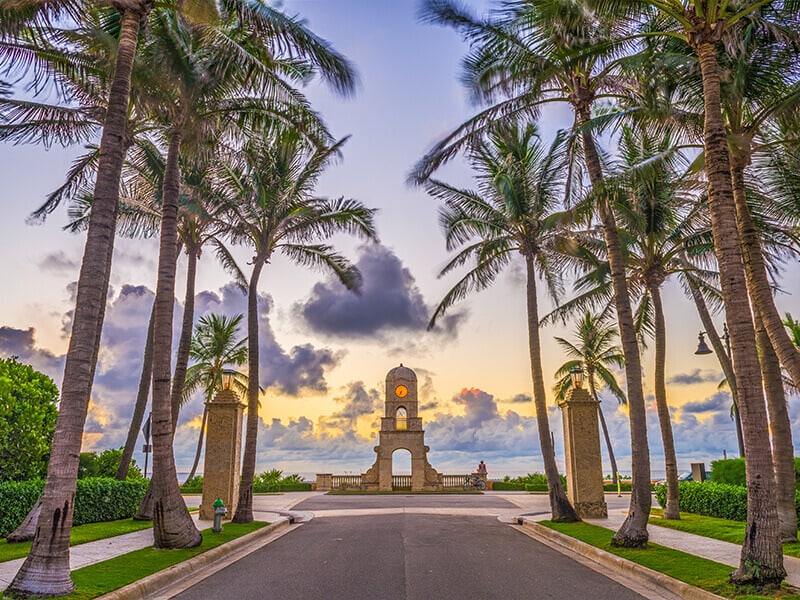
Best Palm Trees For Full-Sun Locations In Florida
If you have areas in your garden that receive more than six hours of sun per day, why not plant palms and fill in the bold spots? Here is the inspiration you needed!
Chinese Fan Palm
What makes this palm an excellent opening palm on my list is beautiful fan-shaped foliage and excellent wind resistance.
Chinese fan palm is a beautiful palm species, commonly used for landscaping in all tropical areas. It is sometimes called Fountain palm, because of its specific, fountain-like shape.
Chinese fan palm is grown in full and partial sun locations, in moist and well-drained soil. The plant has excellent drought tolerance and is relatively easy to grow to its full potential. The botanical name of the Chinese palm is Livistona chinensis, and the palm doesn’t get higher than 50 feet.
The plant thrives in neutral soil but can tolerate a little acidic.
Read more about how to grow this beautiful palm indoors or outdoors.
African Oil Palm
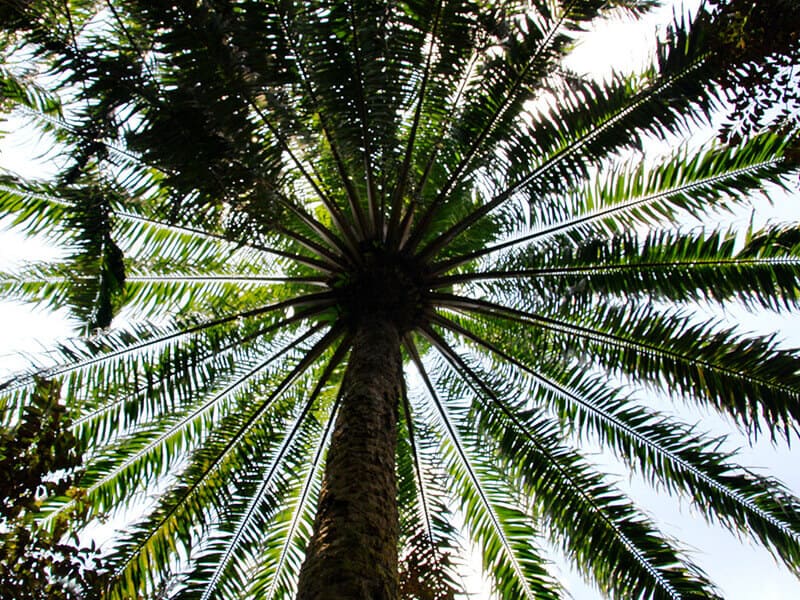
Elaeis guineensis is a botanical name of the humble and beautiful African oil palm. The palm comes from West Africa and has a vital role in palm oil production.
African oil palm can grow up to 65 feet in height. The palm has a traditional, single-stemmed palm appearance with long leaves. Overall, the freshly planted African oil palm produces up to 30 leaves per year in Florida. As it matures, the foliage production decreases, but the leaves remain the highlight point of this palm.
Discover more information about this broadleaved, non-native palm in Florida.
Buccaneer Palm
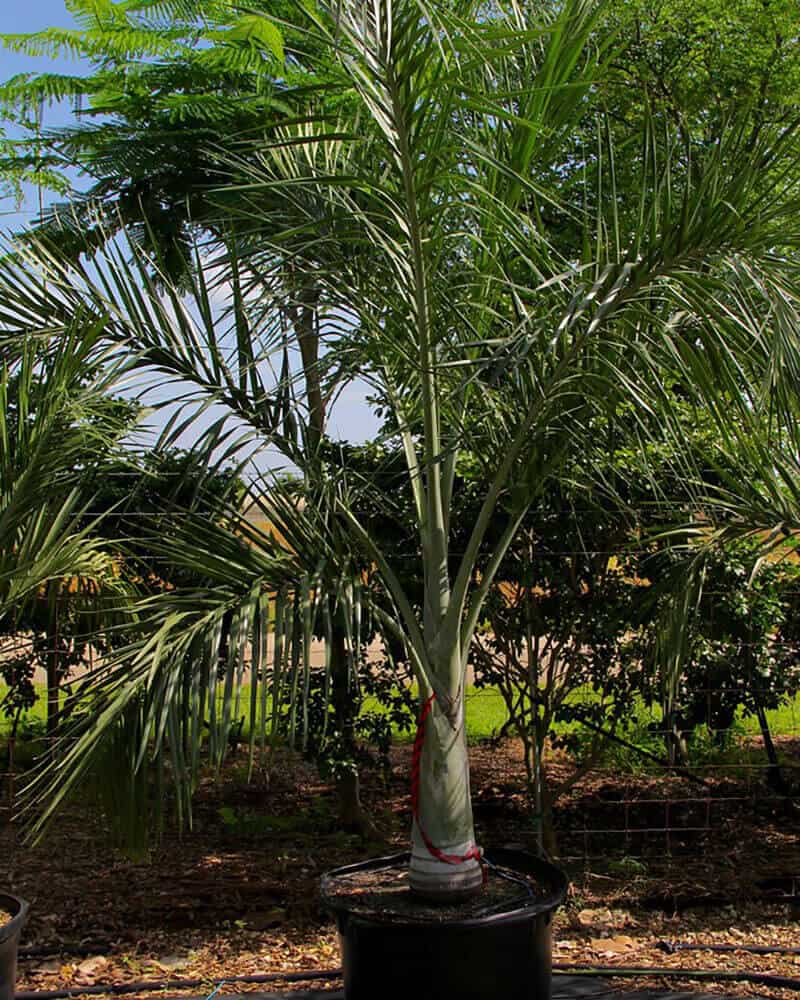
A lovely Buccaneer palm is native to Florida. The scientific name of this tree is Pseudophoenix sargentii. What makes the Buccaneer palm stand out is the unique appearance, because you’ll hardly find two Buccaneer palms that look similar. These palms come in a broad color range – from silver to all shades of green, including bluish variants.
Buccaneer palm is rarely used for private back yards.. It grows from ten to 25 feet in height and tolerates drought and salt very well.
Find out why this palm is one of the central pieces in coastal gardens across the state.
Simple video guide to the planting of Buccaneer Palm near the road, watch the video to know:
Coconut Palm Tree
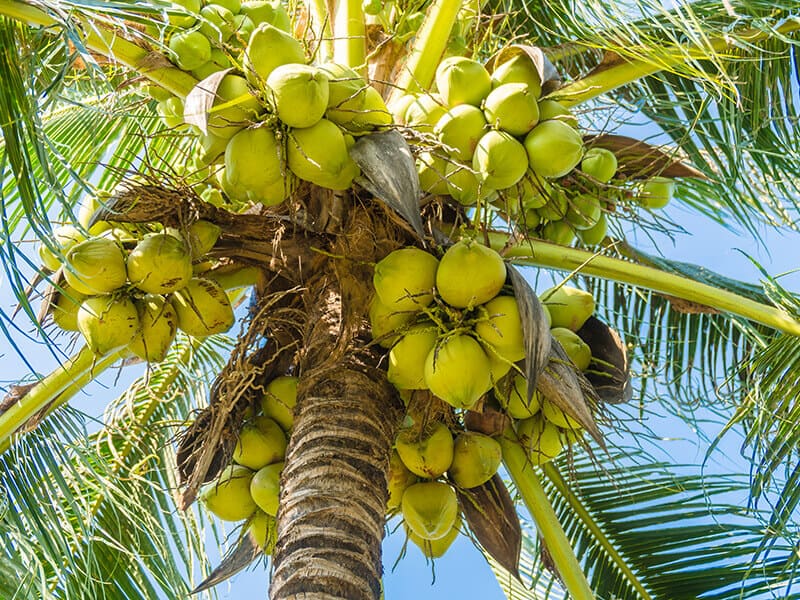
Cocos Nucifera or Coconut palm tree is common around sandy shorelines. You’ll recognize it by its impressive height, as coconut trees can reach 100 feet in height.
The tree is known for its fruit – coconut, used in food and beauty production. The Coconut palm tree is evergreen and develops heavily fragrant, yellow flower clusters throughout the year.
You’ll notice the single-trunk tree large green fonds that can get 20 feet long!
Do you love coconut? Educate about this tropical tree!
Needle Palm
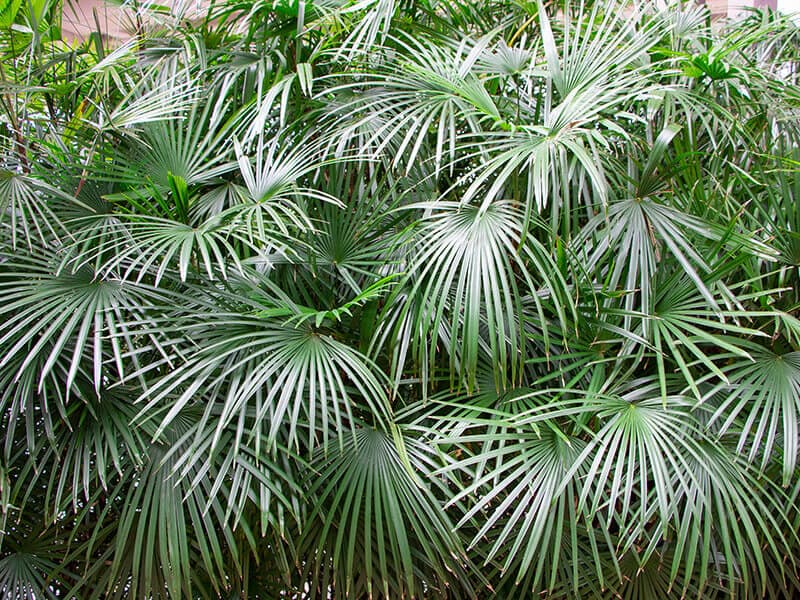
The botanical name of the tree is Rhapidophyllum hystrix. But most people know it for its common name – Needle palm. The name comes from needle-like foliage.
The palm is easy to maintain and grows in full sun and partial shade location. It has a charming look, with a perfectly round and shrubby appearance and stunning blue, thin leaves.
Because the plant doesn’t grow taller than six feet, it has wide use in landscaping.
The best thing: Needle palms are easy to grow!
Sylvester Palm
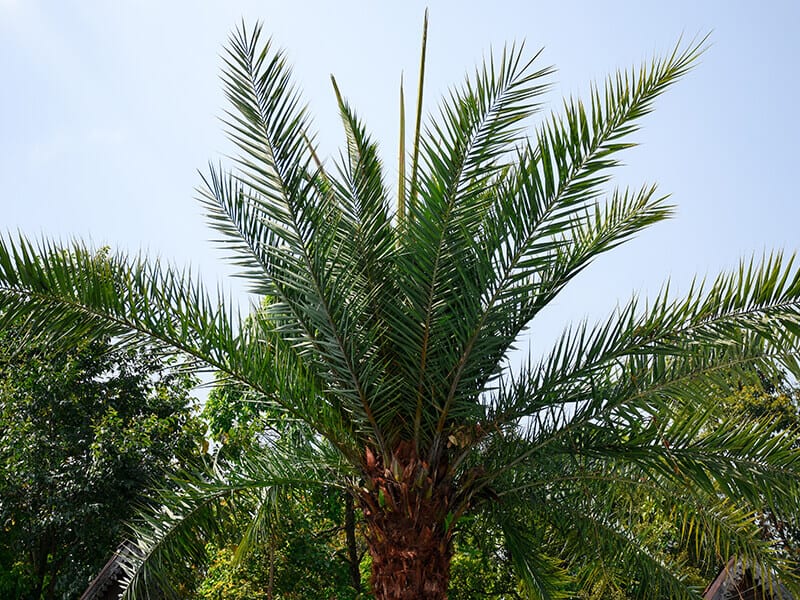
Phoenix sylvestris is known by its names: Sylvester palm, Silver Date Palm, Sugar Date Palm, and Wild Date Palm. It is one of the most beautiful palm trees in Florida used for landscaping.
The single-trunk appearance with multiple fronds rising from the trunk gives this Florida palm an attractive appearance. Even though Sylvester palm requires simple maintenance to grow, it needs a bit of love and care to maintain the sleek look. You’ll have to cut the palm to keep the shape and prevent the old leaflets from ruining it.
The palm grows to 50 feet in various soil types, including sand.
Learn more about this hardy palm!
Best Palm Trees To Grow In Shade In Florida
Palms are tropical plants, and most of them prefer sunny spots. But, if you don’t have enough sun in your garden, it doesn’t mean that you cannot use palms for landscaping! Check out the best palms that tolerate shade well!
Lady Palm
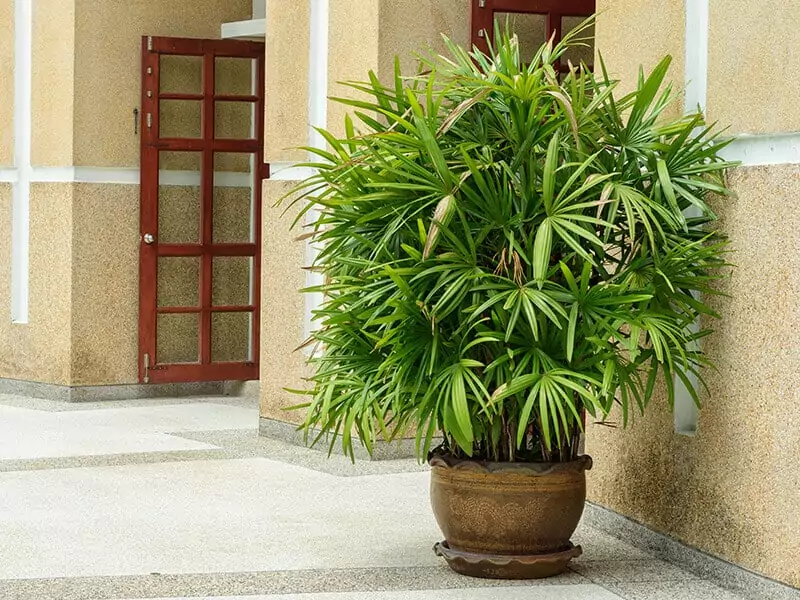
Lady palm or Rhapis excelsa, is a compact palm that can be grown indoors and outdoors. You’ll recognize this palm by its slim and straight stems filled with glossy leaves. Each stem can hold from five to eight narrow leaves, which makes the palm similar to fan palms in appearance.
Lady palm doesn’t need too much light and has a slow growth rate. Overall, it doesn’t grow more than one foot per year. Indoors it can grow up to six feet, and outdoors the height can be 15 feet.
Discover more information about lovely Lady palm!
Parlor Palm
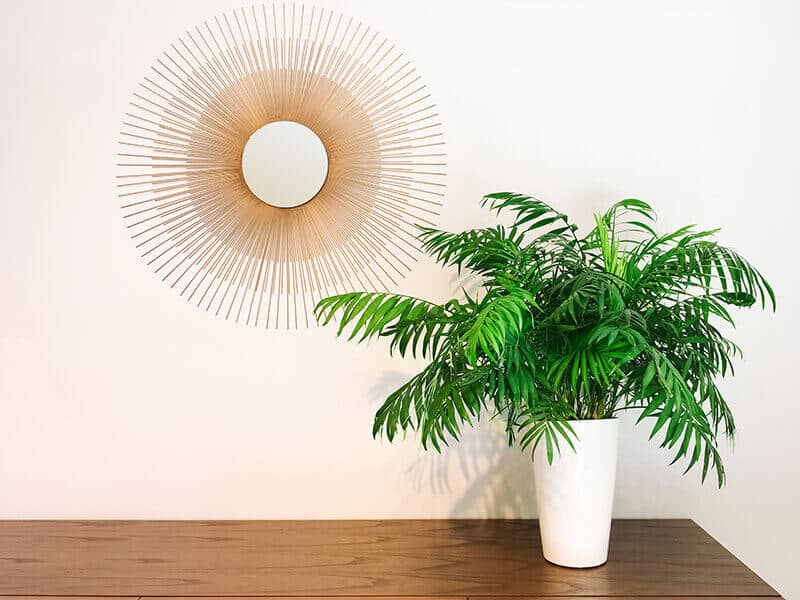
If you are looking for a perfect indoor palm – please consider Parlor palm. The variety can be grown indoors and outdoors, but it won’t bloom indoors.
The palm thrives in neutral and acidic soil and loves indirect light. The most important thing about caring about Parlor palm is to prevent over-watering because it can kill the plant.
Chamaedorea elegans is the scientific name of the palm, but people also know it as e Neanthe Bella Parlor Palm.
The palm reaches six feet with the right care.
Growing Parlor palm to its full potential is tricky but manageable with the proper care!
Red Sealing Wax Palm
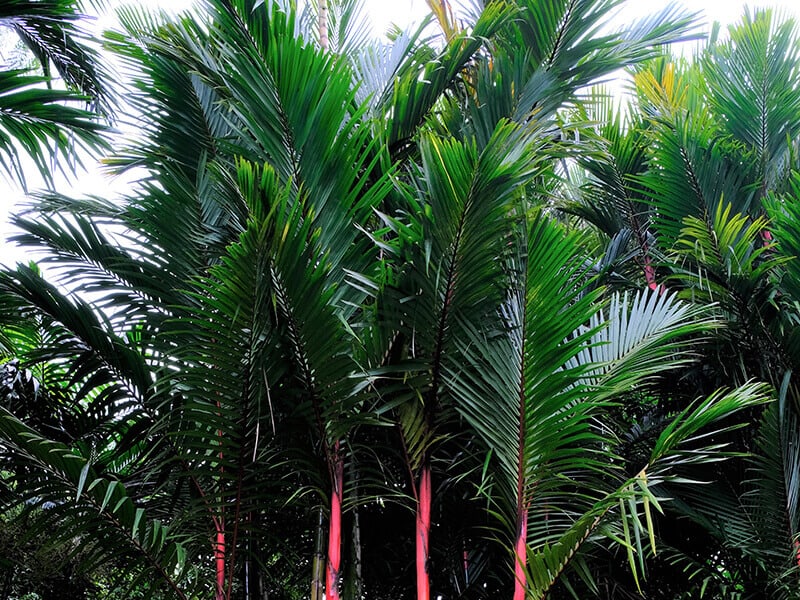
Red sealing wax palm or red palm is a stunning and attractive palm that is a bit tricky to grow. The palm is sometimes called lipstick palm and it differs from other similar palm varieties by its red trunk and fronds.
The red color is brighter when you know how to care for the palm and protect it from the wind. It needs high humidity, but well-drained soil, but can thrive in full sun and shade. Red palm comes from Sumatra, where it can grow up to 30 feet.
In Florida, Cyrtostachys renda doesn’t get taller than 15 feet.
Find out more about this distinctive palm!
Best Palm Trees For Limited Space
Large palms look majestic, but you can achieve a beautiful effect if you choose compact variants. They easily mix with other trees and shrubs in your garden and aren’t difficult to grow.
European Fan Palm
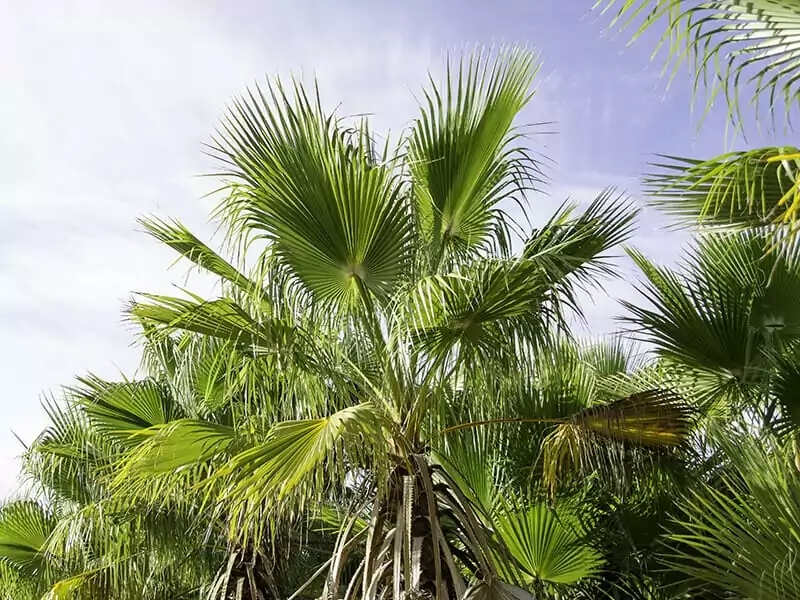
Chamaerops humilis or European fan palm or Mediterranean fan palm is a stunning multi-trunk palm used for landscaping and around pools. It does well in containers and in soil. The palm grows slowly with an average height of ten to 15 feet. The maximum width the European fan palm can reach is ten feet.
An interesting fact about this one is that it is the only palm native to Europe. Still, it is very hardy and has simple growing requirements.
Find out what you shouldn’t do around European fan palms!
Dwarf Palmetto
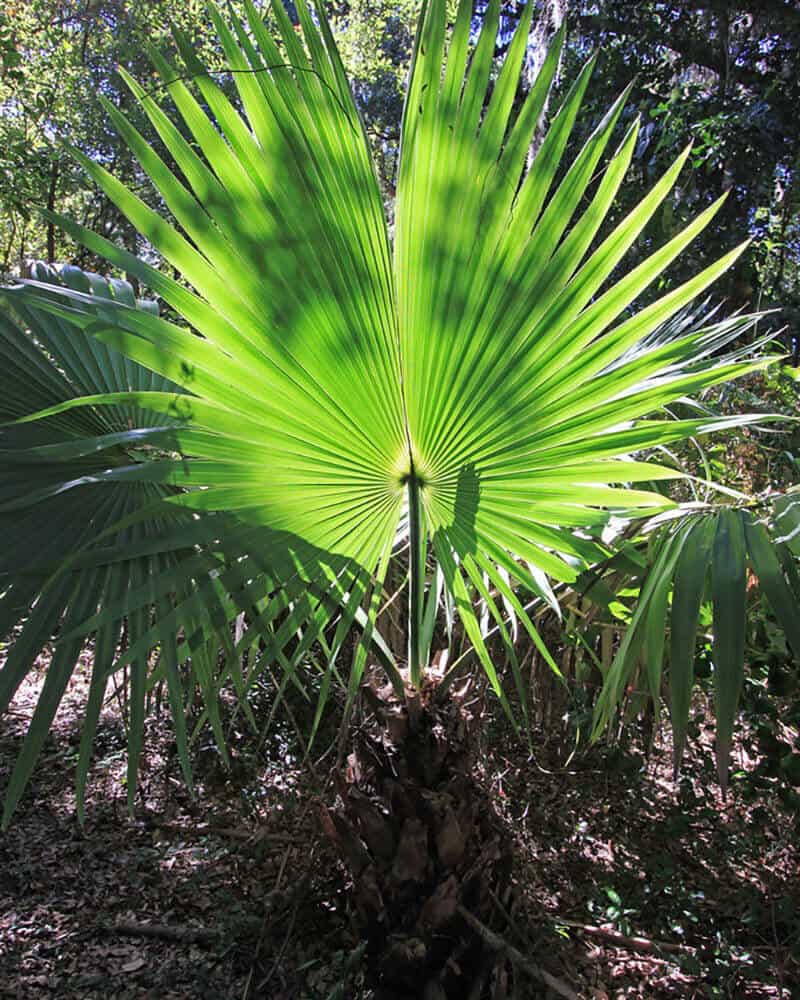
Sabal minor or dwarf palmetto grows best in damp and shaded places when first planted. Once the palm establishes, it becomes very drought tolerant and easy to maintain. Overall, Dwarf palm is great for colder places with poor-drained soil.
People use this charming plant as an accent tree for landscaping. The beautiful foliage develops in shades of deep green and gray. But during the drought, it turns slightly brownish.
The palm doesn’t grow on average between five and eight feet.
Enjoy more information and images of this popular palm in Florida.
Pygmy Date Palm
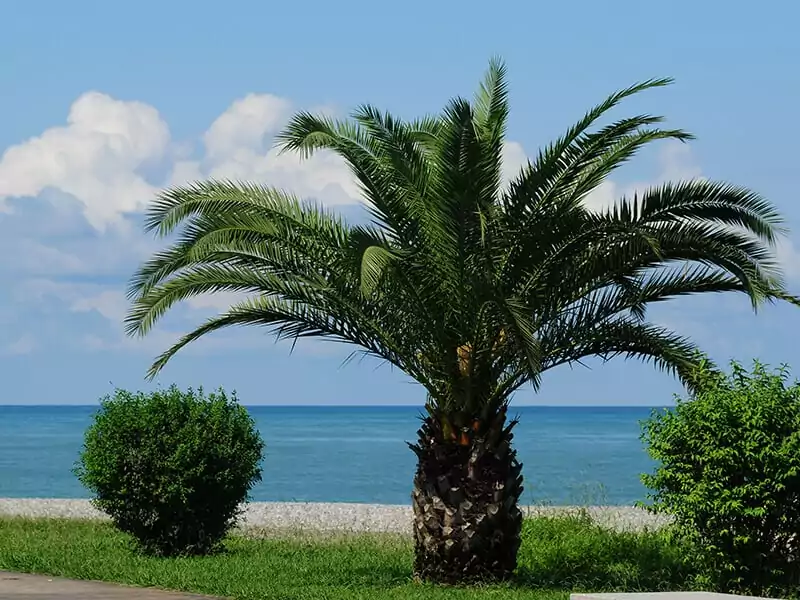
Pygmy Date Palm is a compact palm that doesn’t grow too tall and thrives indoors and outdoors. The palm has straight branches in vivid green color with slender leaflets. Overall, the palm develops a charming crown and requires pruning to maintain its shape.
The scientific name of the palm is Phoenix roebelenii. During the blooming season, the palm has beautiful yellow and fragranced flowers that make its appearance even more eye-catching. The average height of this palm is between six and ten feet.
Get more interesting facts about Pygmy date palm and decide whether it suits your needs!
Saw Palmetto
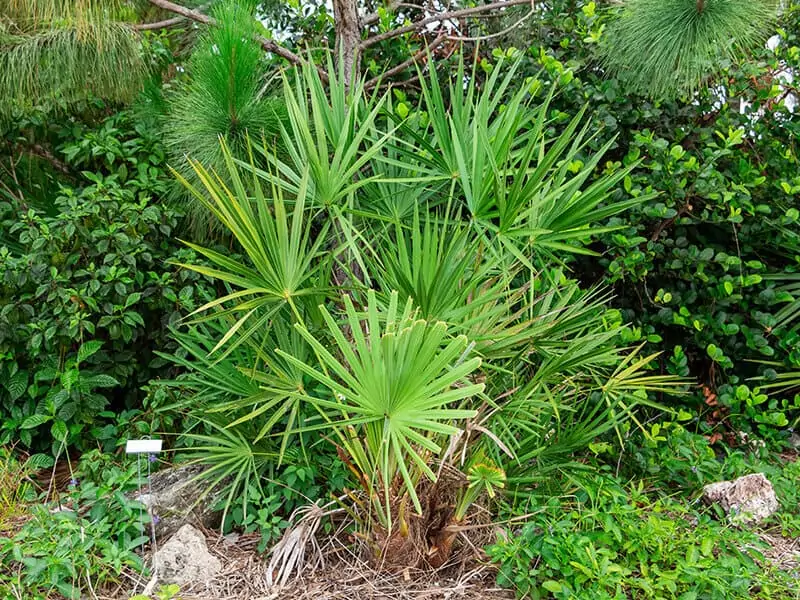
A lovely Saw palmetto thrives in open sun locations, especially when first planted. It also needs regular watering until it establishes. Then, it becomes a hardy palm that requires low maintenance. Saw palm grows slowly and has a distinct multi-trunk appearance. It can grow up to ten feet in height and the same in width.
The stems have multi-colored leaves, from green to blue and silver, especially in Florida.
The botanical name of the Saw palmetto is Serenoa repens, and the tree has been used for medicine production.
Check more information on how to grow Saw palmetto in your backyard.
Best Large Palm Trees In Florida
A tall palm with a large crown is probably the most recognizable symbol of tropical areas. Large palms are great for landscaping, and if you have enough space in your garden, why not plant some of the tall palms from the following list?
Alexander Palm Tree
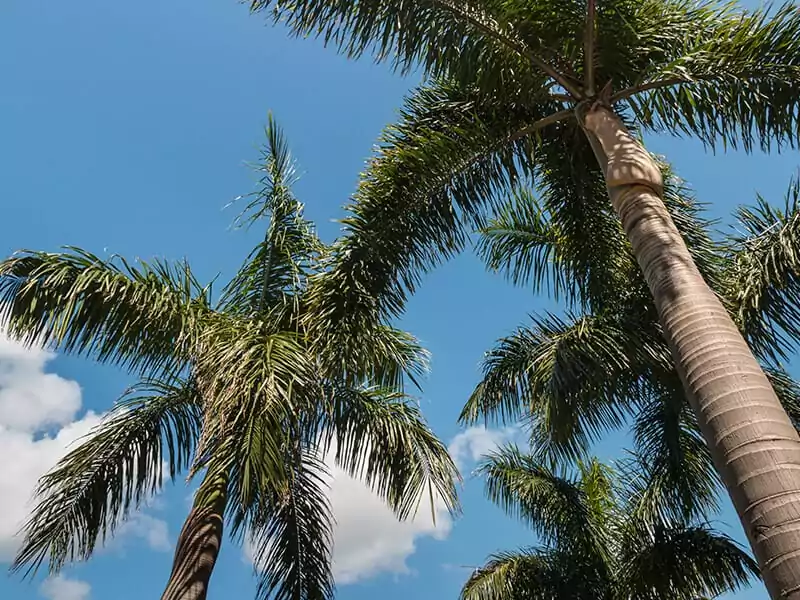
The Alexander palm tree is a tall and sleek palm, best known for its narrow shape and beautiful crown. Some people call it Solitaire palm, because of its one-trunk shape.
Alexander palm pairs well with other palm varieties, and is often used for landscaping. You can plant it near multi-trunk shorter palms for the best effect.
Alexander palm is easy to care for and reaches the height of 25 feet. It thrives in full sun locations but can tolerate moderate shade.
The botanical name of this palm is Ptychosperma elegans.
You can use Alexander palm in multiple ways for landscaping and shade.
Discover what makes Alexander palm different from similar-looking palms:
Queen Palm
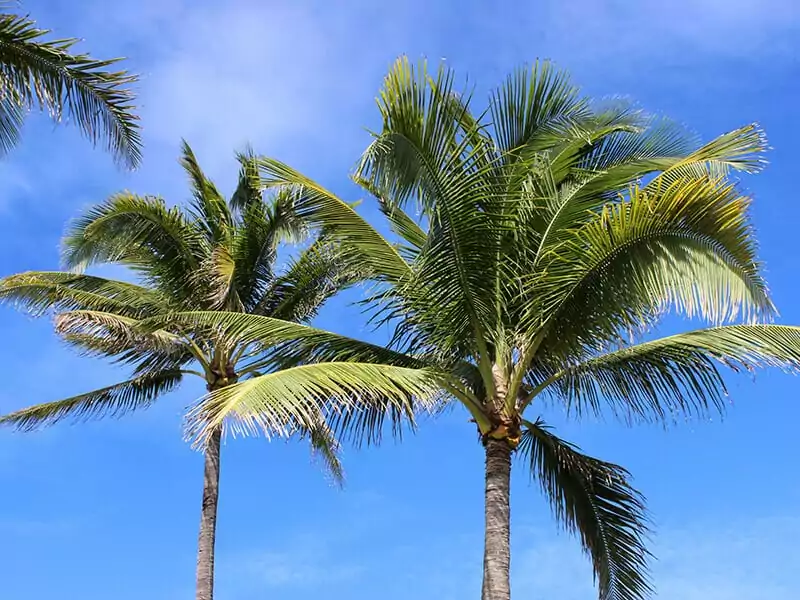
Queen palm or Syagrus romanzoffiana is one of the most beautiful palms, native to South America. It is spread around the world as an ornamental tree because of its tropical appearance and rich green foliage. Queen palm can grow up to 50 feet with its canopy spreading up to 25 feet. Therefore, it has a majestic appearance and grows surprisingly quickly.
It requires frequent moisture and fertilization to grow. If the soil is acidic, caring for your Queen’s palm is simple.
You can see it along roads, near beaches, and in beautiful Florida parks.
Find key information about growing Queen palm from seeds and start growing it ASAP.
Canary Island Date Palm
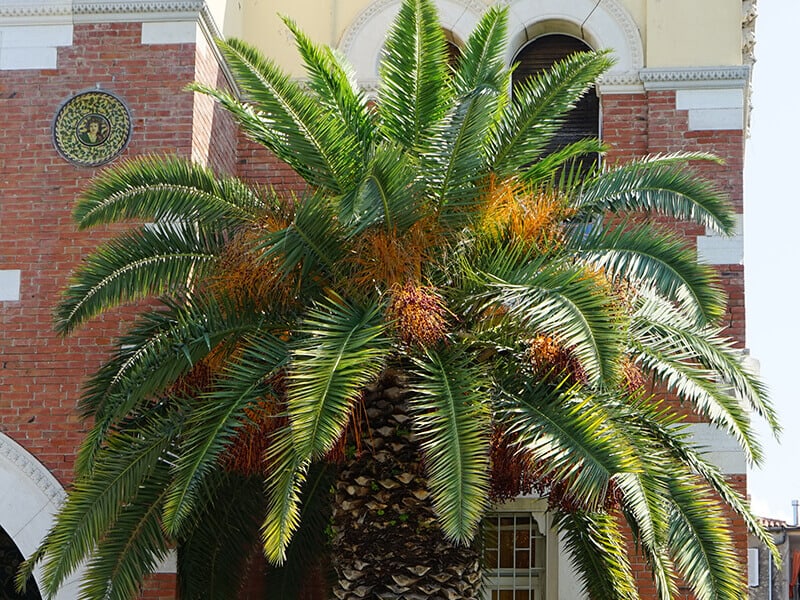
Canary Island date palm has beautiful glossy and feathery fronds on curved branches. The palm develops ornamental fruit and looks stunning when used for landscaping. However, Phoenix canariensis requires specialized maintenance to develop to its full potential.
The maximum height it can reach is 65 feet, and the spread can be 40 feet, which makes it one of the most impressive palms in Florida.
The tree grows slowly and requires frequent fertilization as well as optimal sun and moisture. Potassium and magnesium are the two most important minerals for the Canary Islands date palm.
Find out more about caring for this beautiful palm, native to the Canary Islands.
Foxtail Palm
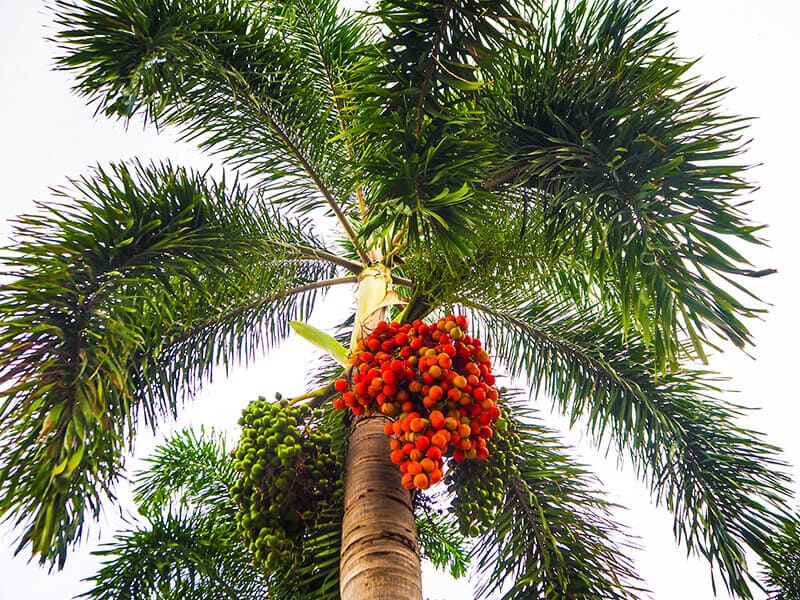
Foxtail palm is one of the fastest-growing palms in Florida. When planted in an area with a warm climate, the Foxtail plant can grow up to three feet per year, which is pretty impressive. The palm doesn’t require complex maintenance at all.
The fronds of the Foxtail plants are feathery and rich, in beautiful shades of blue and green. When you plant it in full sun, the plant won’t suffer from pests and fungal diseases and will award you with a majestic appearance in only several years.
Because Foxtail palm is salt-tolerant, you can often find it near beaches in coastal areas of Florida. The botanical name of this palm is Wodyetia bifurcata and it is native to Australia.
Discover more about the all-time favorite tree in tropical areas.
Piccabeen Palm
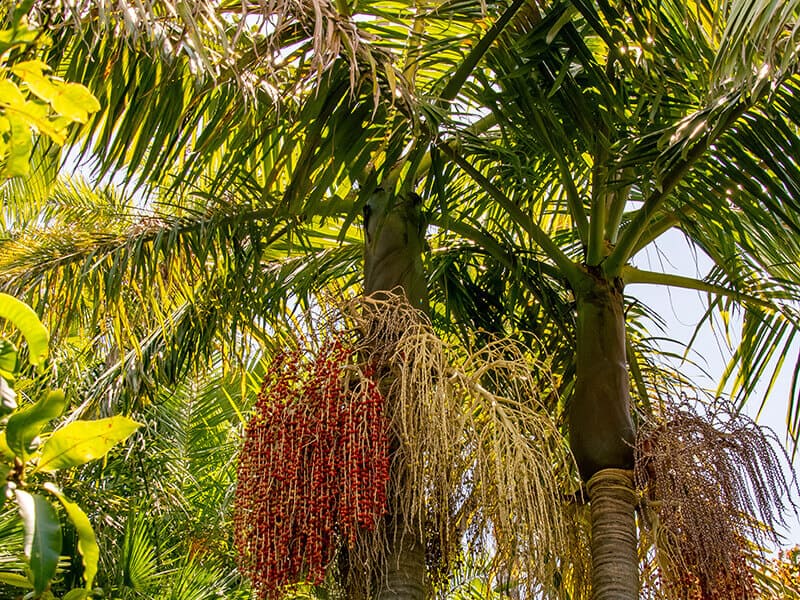
The scientific name of Piccabeen palm is Archontophoenix cunninghamiana. The palm looks similar to coconut palm with its long and beautiful palm fronds, but it stands out with a gray trunk and vivid green crown shaft.
Piccabeen palm is relatively cold-tolerant and can be grown in full sun or partial shade locations. It requires fertilization and regular watering, but the plant is self-cleaning.
It means that there is less work for you, and you won’t have to cut the brown fronds to maintain the beautiful look.
The maximum height it can reach is 30 feet. You can plant in the corner of your garden or alongside the driveway.
Find out more about this easy-going, yet charming palm.
Silver Bismarck Palm
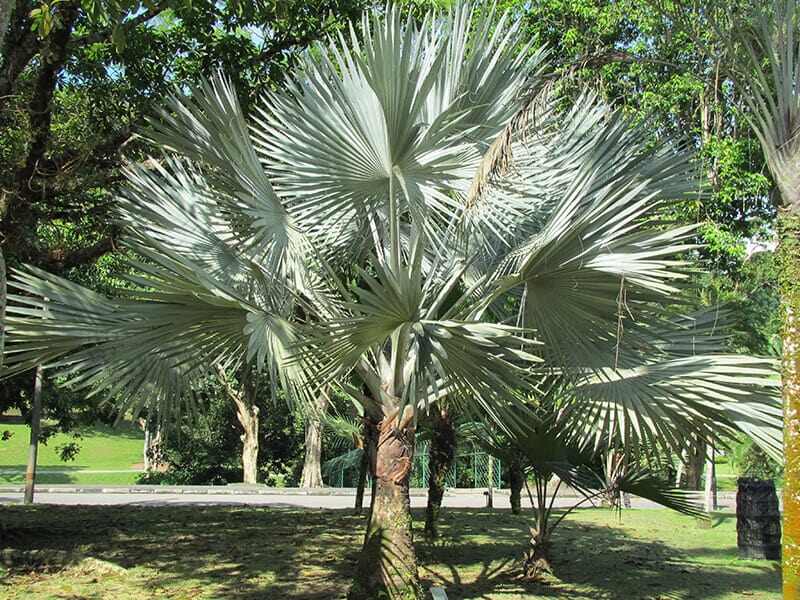
The Silver Bismarck Palm is probably the most attractive in the entire region of South Florida. With its rich foliage in unique silver color, this palm stands out in all landscapes. The crown is surprisingly symmetrical and the trunk can be 20 inches thick. Bismarckia nobilis is very tall, with an average height between 50 and 60 feet.
To thrive, Bismarck palm needs full sun location and wind protection. You can use fertilizer a couple of times per year to speed up the growth rate. As soon as the plant establishes, it requires minimal care and will become a focal point in every garden!
Learn more about this stunning palm!
Find out what it takes to successfully grow Bismarck palm from seed:
Latania Palm
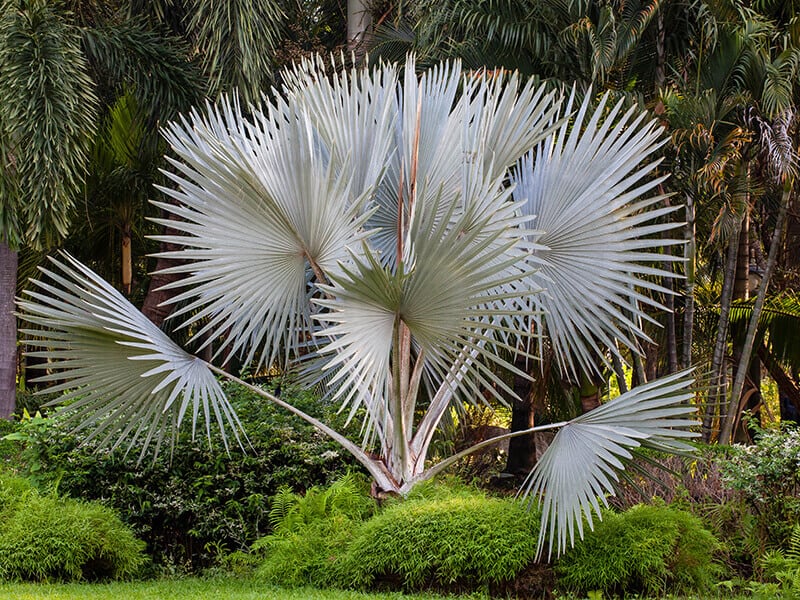
Latania palm is a gorgeous palm that looks similar to Silver Bismarck palm but is smaller. Latania palm has two types – Latania loddigessi, a blue palm tree, and Latania lontaroides, the red tree.
These palms are very similar when young. However, the red variant has a unique red vein on the silver fronds. Rarely, you can see the third variant – yellow Latania.
The trunk of the Latania palm isn’t as smooth as some other palm trunks. It can grow up to 30 feet and doesn’t need much to grow to its full potential. Latania palms are salt and drought-tolerant! Therefore, it is common around Florida beaches!
Find out why Latania palm is a common beach palm in Florida!
Royal Palm
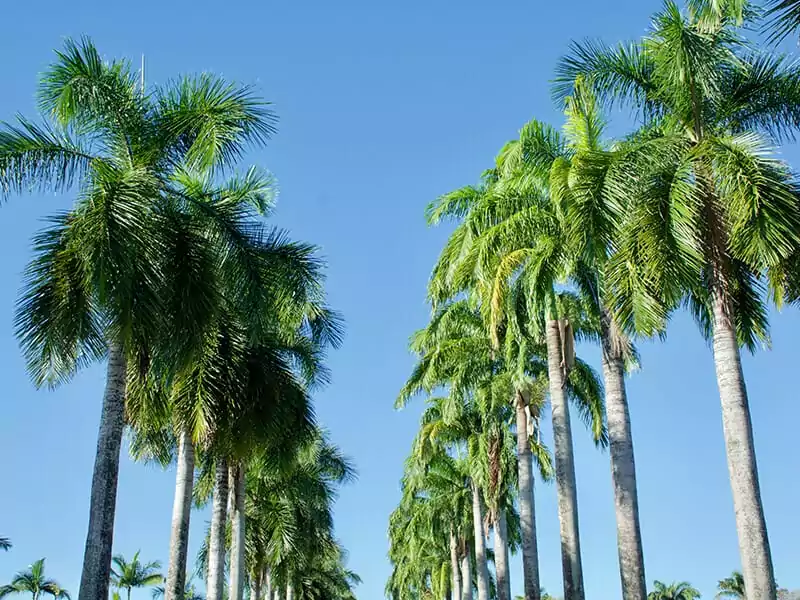
Royal palm is worthy of its name due to its lavish and attractive appearance. It can grow up to 100 feet!
The scientific name of this palm is Roystonea regia, and it has a stout, smooth, grey trunk. It makes a stunning contrast with the vivid green crown shafts.
The palm has a moderate growth rate and can grow a maximum of two feet per year. Royal palm is actually native to Florida and Cuba, and part of the recognizable landscape of these places.
Discover tips for growing Royal palm!
Paurotis Palm
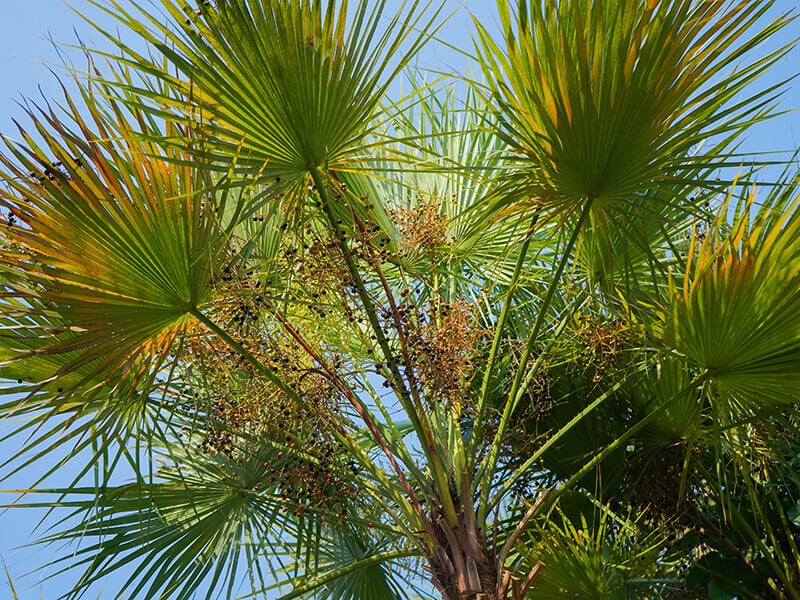
Unlike erect, solitary palms, Paurotis palm grows in clusters with thin and tall trunks. These clusters add texture and dimension to landscapes. The fan-shaped, wispy foliage makes a gorgeous contrast with white flowers. The palm can grow up to 30 feet and spread half of it.
It can grow close to water because it is a wet-tolerant. If you are looking for a palm to grow and get privacy in your space, the clusters of Paurotis palm will work perfectly!
The scientific name is Acoelorrhaphe wrightii.
Check more interesting details about growing and caring for Paurotis palm.
Ponytail Palm
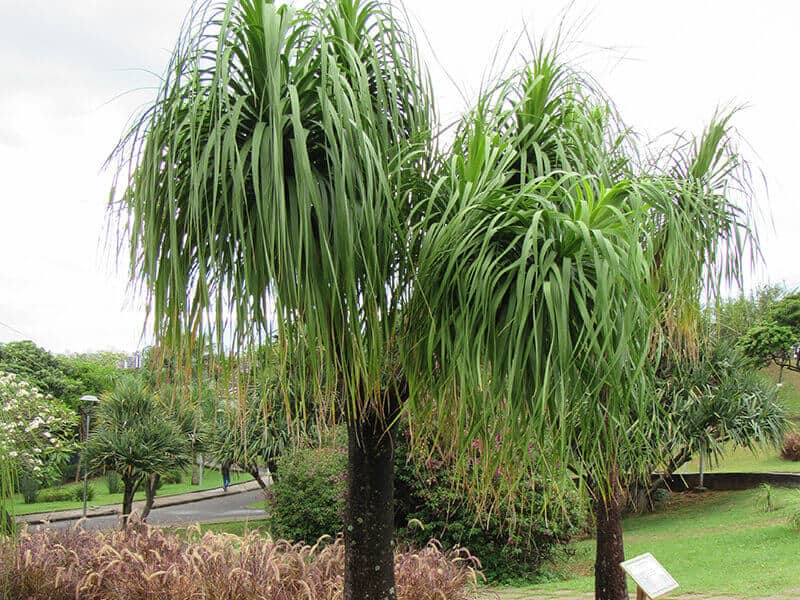
Ponytail palm actually belongs to the Agave family, but many people find it to be their favorite Florida palm. Surprisingly, it is a succulent that reaches the height of an average tree. The foliage develops and drapes over the tree branches, making this Ponytail plant a great choice for shade. It can reach 20 feet in height and is often found in many yards in South Florida.
The trunks are thicker than in standard palms, and the tree doesn’t require complex care. All you have to do is water regularly and ensure that it has enough sun!
The botanical name of this palm-like succulent is Beaucarnea recurvata.
Find out how you can grow a Ponytail palm in your garden.
Ribbon Fan Palm
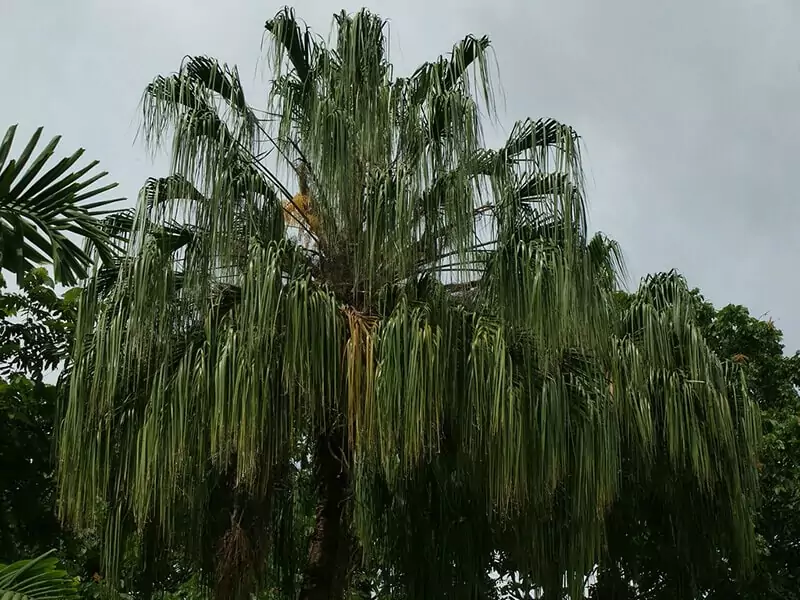
The ribbon fan palm gets very tall, but it needs time. Because it is a slow grower, some people skip in favor of more fast-growing palms. But, the Ribbon fan palm is worth waiting for because it has a unique appearance with its long leaves.
The palm looks great when planted alone, but adds much-needed dynamic in the landscapes with solitary palms.
The palm can reach 30 feet in height and is cold and salt-tolerant.
The scientific name of this palm is Livistona decipiens, but most people know it by the ribbon-like, long, and draping green foliage.
Should you choose it for your garden? Find out!
Fishtail Palm
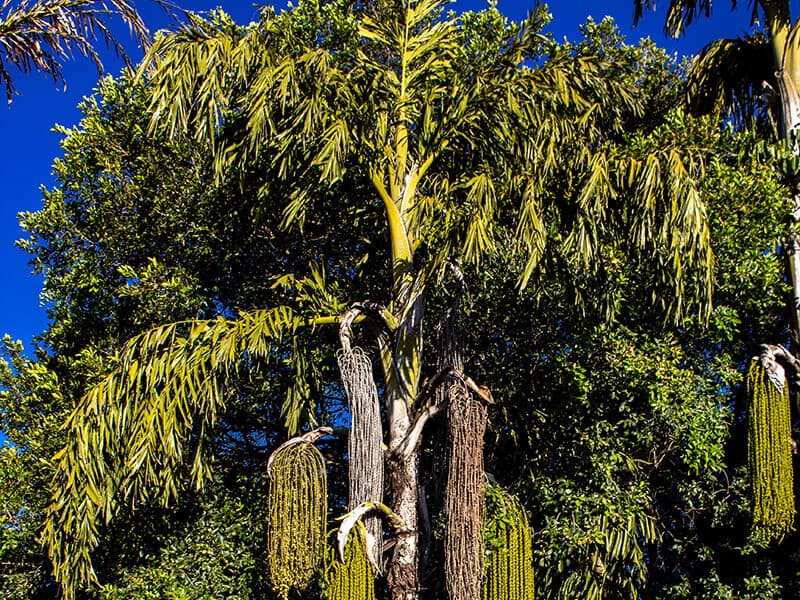
Pine Island, Naples, Fort Myers and Bonita Springs are proud habitats of the graceful Fishtail palm tree. It grows up to 25 feet in height and has a slow growth rate.
The palm is known for its clumping appearance and leaves with rough edges on the swirling fronds. Overall, the fronds look like the fishtail, hence the name. The botanical name of this palm is Caryota mitis, and the palm thrives in full sun and partial shade locations.
Check more about this palm with a unique appearance!
Can You Choose Only One Palm?
In palm heaven, such as Florida, it is hard to choose only one palm species to grow. But, you’ll get the best landscape if you mix single-trunk and multi-trunk palms. Just ensure that the palms you choose have similar growing conditions in terms of sun exposure, salt and sand tolerance and watering.
Have you chosen the palms for your backyard? My favorite is the Bismarck silver palm!
If you enjoyed the article, please don’t forget to share it with your friends and family!
